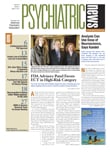The U.S. Supreme Court has unanimously backed the Internal Revenue Service in its contention that medical residents are not students but full-time employees and are thus subject to having taxes withheld on the salary they receive from their residency program.
The January 11 ruling came in the case Mayo Foundation et al. v. United States in which Mayo (and the University of Minnesota) sued to recover tax payments made to the government under the Federal Insurance Contributions Act (FICA) on the wages paid to medical residents. FICA withholding covers payments for Social Security and Medicare.
Congress had exempted students who work for the colleges or universities in which they are enrolled and regularly attend classes from the FICA requirements, but did not specifically include medical residents in that exemption. As a result, the Treasury Department declared in December 2004 that for tax purposes residents were full-time employees since they work more than 40 hours a week— usually between 50 and 80 hours a week.
The Mayo Clinic, based in Rochester, Minn., began paying its part of the FICA taxes in 2005, after the Treasury Department determination, but then sued to recover those payments. The Mayo Clinic maintained that its residents were students, not employees, because the primary goal of residency is for these medical-school graduates to further their education.
Mayo's argument had been upheld by a lower court, but a federal appeals court overturned that decision, ruling in favor of the government's position, and the Supreme Court justices (with Elena Kagan not participating) voted to uphold the appeals court.
Mayo argued that the government's rule on employee versus student status is arbitrary in its distinction between hands-on training and classroom instruction. Mayo maintained that despite the number of hours residents work, their employment is educational. It wanted the Treasury Department to conduct a case-by-case inquiry into what each resident does and why before determining that someone is an employee rather than a student.
In response to this argument, the Supreme Court justices decided that "the [Treasury] Department reasonably sought to distinguish between workers who study and students who work. Focusing on the hours spent working and those spent in studies is a sensible way to accomplish that goal. The Department thus has drawn a distinction between education and service, not between classroom instruction and hands-on training."
The justices noted that while they "do not doubt that Mayo's residents are engaged in a valuable educational pursuit or that they are students of their craft. . . . But regulation, like legislation, often requires drawing lines," and the one the Treasury Department drew is acceptable and within its rule-making mandate.
They added that the FICA-related rule "takes into account the [Social Security Administration's] concern that exempting residents from FICA would deprive residents and their families of vital disability and survivorship benefits that Social Security provides."
An attorney for Mayo and the University of Minnesota and a former U.S. solicitor general, Theodore Olson, expressed the institutions' disappointment with the Court's ruling. He said, "As the Court itself acknowledged, medical residents are engaged in a formal and structured educational program that is an indispensable component of their medical training. The Treasury Department's regulation overlooks the important educational pursuits in which residents are engaged."
